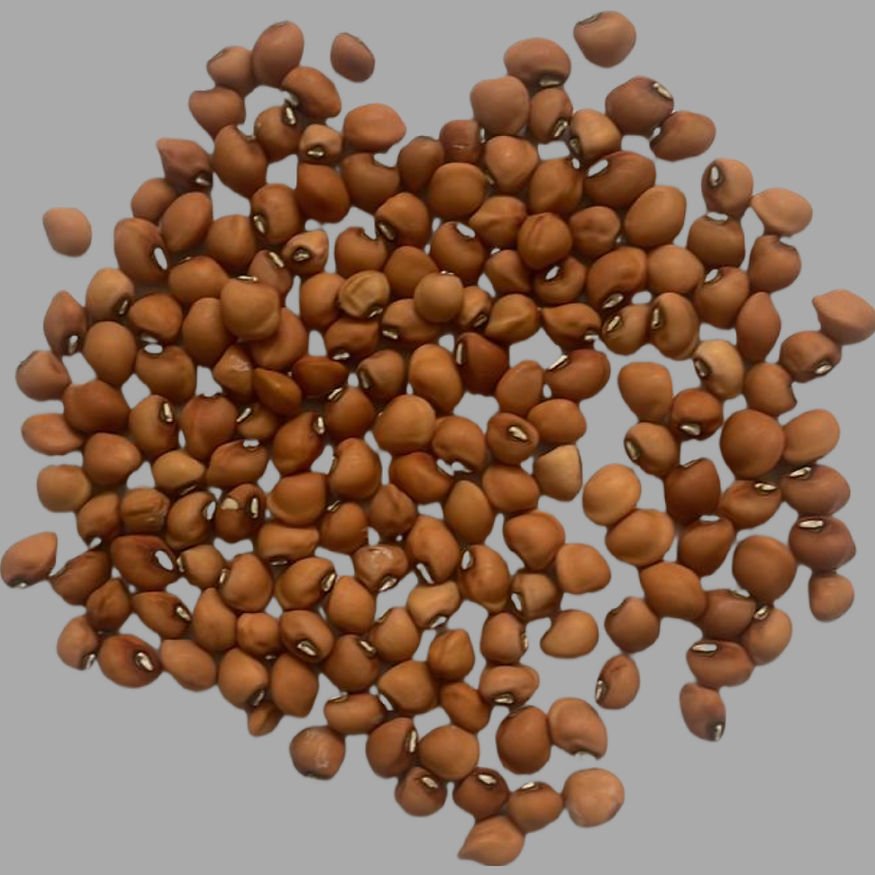The Mississippi Purple Cowpea is a unique and heirloom variety of cowpea (Vigna unguiculata) that is known for its striking purple-hued pods and beans. It is a traditional legume variety grown for both its edible beans and as a soil-enriching crop due to its ability to fix nitrogen. Below are some key details about the Mississippi Purple Cowpea:
1. Appearance:
– Pods: The pods of the Mississippi Purple Cowpea are deep purple, often speckled or striped, which makes them visually distinct from other varieties of cowpeas.
– Beans: The beans themselves are typically medium-sized, with a deep purple or burgundy color. When dried, they are often used in cooking, and they have a rich, earthy flavor.
2. Growing Characteristics:
– Climate: As a warm-season legume, the Mississippi Purple Cowpea thrives in hot, sny climates and is particularly well-suited to the southern United States.
– Soil: It grows best in well-drained, sandy or loamy soils, although it is fairly tolerant of less fertile soils due to its nitrogen-fixing ability.
– Growth Habit: It has a vining or bush-like growth habit, depending on the specific strain, reaching about 18–24 inches in height, with long, trailing vines.
– **Harvest**: The beans are typically ready for harvest in about 70–90 days from planting, depending on the growing conditions.
3. Culinary Use:
– The beans are commonly used in Southern U.S. cuisine, often in dishes like soups, stews, salads, or simply cooked with seasonings and served as a side dish.
– When cooked, the beans have a creamy texture with a mildly nutty flavor.
– The dried beans can be stored for long periods, making them a great pantry staple.
4. Nutritional Value:
– Like other cowpeas, the Mississippi Purple Cowpea is a great source of plant-based protein, fiber, and essential vitamins like folate and vitamin B.
– It is also rich in minerals, including iron, magnesium, and potassium.
5. Cultural Significance:
– This variety has historical roots in the southern United States and was traditionally grown by African American farmers and communities. It is part of the larger family of heirloom cowpeas that are important to Southern foodways and culture.
6. Growing Tips:
– Planting: Cowpeas are best planted after the last frost when the soil has warmed. They are often direct-seeded, meaning the seeds are sown directly into the ground.
– Watering: While cowpeas are drought-tolerant once established, they still require regular watering during dry spells to ensure good yields.
– **Pest Resistance**: Cowpeas are relatively resistant to many pests but may occasionally face challenges from aphids or beetles.
7. Agronomic Benefits:
– The Mississippi Purple Cowpea, like other cowpeas, is an excellent rotational crop, as it helps improve soil health by fixing nitrogen, reducing the need for synthetic fertilizers.
This heirloom variety is a great choice for gardeners looking to grow a distinctive and historically significant legume that offers both culinary value and soil improvement.









Reviews
Clear filtersThere are no reviews yet.